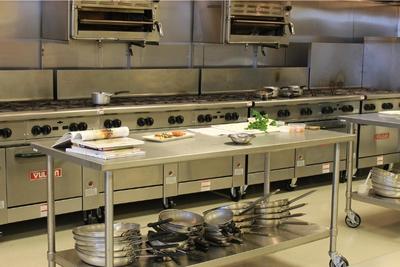
Vinci Response Services attended the property for a restaurant that suffered a kitchen fire and report upon kitchen equipment, structural elements and other contents being affected.
1.0 Property:
The property is a commercial ground floor restaurant within a terraced block circa 1940’s of solid all and floor construction and timber suspended to the first floor area.
2.0 Incident:
A fire is reported to have occurred during the afternoon of 19th October 2015 resulting in residual damage to all areas within the restaurant. Structural damage is noted to the ceiling area where the seat of the fire is reported in a ducting system. We understand the fire was duly extinguished.
3.0 Conclusion:
The restaurant although not affected by the fire per se has been affected in varying degrees by the by-products of such and particles of incomplete combustion. Smoke residues and ‘fatty’ deposits have been afforded to all surfaces on the structural elements and content items.
As to be expected the kitchen area has been more severely affected due to it being directly below the point of origin and is also affected by extinguishment water used by the fire service. This has resulted in debris from the ceiling above falling through onto the appliances and floor below and water staining is now clearly evident on some of the stainless steel panelling to the rear of the kitchen.
We conclude that decontamination can be successfully achieved using the outlined processes in Section 4.0 to remove smoke residues, strip out odour sources and odour retaining materials and encapsulate contamination to prevent secondary damage and the possibility of associated ill health.
3.1 Recommendations
• Installation of temporary lighting for H&S purposes.
• Preparation to remove wall hangings, framed stone images and stainless steel panelling and hoods.
• Removal of catering equipment as described in Section 4.0 below, furniture and fixtures and fittings.
• Structural decontamination
4.0 Observations:
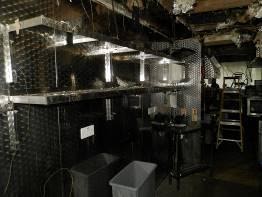
4.1 Cooking area:
The seat of the fire is within ceiling ducting just above the main cooking facility. Most structural damage is confined to the direct location above and the to the side of the restaurant (see 4.2 below).
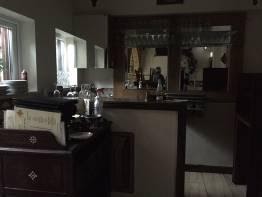
4.2 Rear seating area:
As per 4.1, the fire has resulted in localized damage to the wall adjoining the rear of the restaurant. The fire has caused severe damage in the main to the flat directly above.
4.3 Charcoal burner with extraction hood:
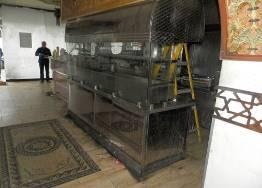
The unit is close the point of origin of the fire and has suffered water damage and smoke contamination. There aren’t any signs of corrosion which would relate to the primary incident, there are however signs of historic fat residues which is expected and staining is apparent. The item will need to be removed in order to facilitate a more comprehensive assessment and to also ascertain if it would be cost effective to restore. Restorative cleaning involves stripping back the appliance and undertaking a deep clean of the internals, once completed an engineer would sign-off the appliance for use due to the nature it uses an open flame for cooking.
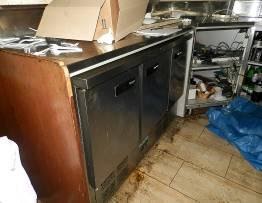
4.4 Chiller units x 5:
Of the five chiller units in the kitchen area, four are stainless steel and one is a glass front sliding door drinks unit. All have been affected by moderate levels of smoke residues, however due to the fine layer of cooking grease/oil in the environment, they are currently not showing any signs of corrosion or deterioration from the effects of the incident. We recommend all units are removed for cleaning and decontamination by way of a strip down and internal deep clean to remove smoke residues and associated contaminants.
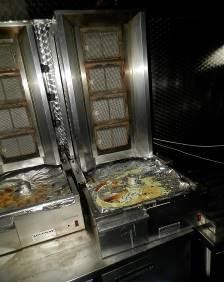
4.5 Vertical ‘kebab’ spits x 2:
The two ‘Archway’ vertical spits have been affected by light contamination as they are further away from the point of origin. As with the above appliances there aren’t any signs of corrosion that relate to the primary incident and are of the opinion that both items will respond to cleaning and decontamination to a point that they will be returned in a pre-incident condition.
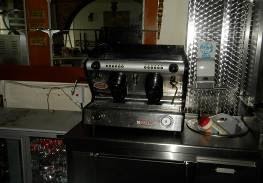
4.6 Sandremo coffee machine:
This item has very little in the way of smoke residues/contamination afforded to it; as such we are confident that this item will respond to cleaning and decontamination.
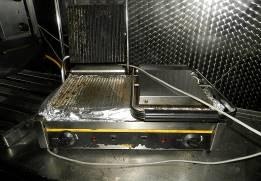
4.7 Buffalo toaster:
There is charred residue and staining afforded to the hot plates from use over the years, however this not related to the primary incident but would need to be removed in order to successfully clean and decontaminate the item.
On the above basis we are of the opinion that this item would not be economical to restore due to the time it would take to dismantle and thoroughly clean.
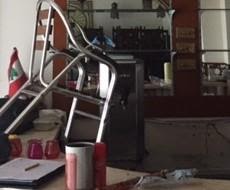
4.8 Franchino – hot water appliance:
Very little in the way of contamination on this appliance, as such it will respond successfully to cleaning and decontamination.
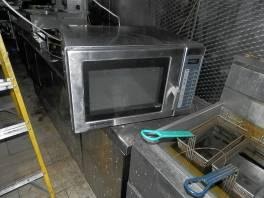
4.9 Menu Master commercial microwave oven:
Smoke residues are clearly evident to the external of the stainless steel casing of this item, however, the appliance appears to be very well sealed and our opinion based on the initial site assessment, it can be successfully cleaned.
We would recommend the items is also removed from the risk address and further assessed off of site and cleaned if considered cost effective.
4.10 Anets – VAT/deep fryer unit (as in the image above):
This item is very close to the point of origin; subsequently it has been affected by extinguishment water and moderate levels smoke residues from the fire above. The frying oil will need to be removed/emptied prior to any work taking place or the removal and disposed of appropriately.
As with the other appliances we have not seen any loss related corrosion and are of the opinion, is as a result of the oily nature of the appliance.
We are confident that this item can be cleaned to a pre incident condition once it has been removed from the risk address.
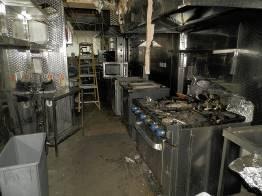
4.11 Imperial 6 ring gas cooker/oven:
This item is directly below the point of origin of the fire, as such it has been affected by extinguishment water, falling debris and smoke residues as a result.
Due to the above we would recommend the appliance is removed from the risk address as soon as possible and assessed further for any signs of loss related damage that may inhibit future safe use of such.
4.12 Commercial dishwasher:
This item has been affected by light smoke residues and splatter marks from wet debris and extinguishment water.
Based on our initial evaluation we are confident this item will respond successfully to restorative cleaning and decontamination, however we would advise that a further more in depth assessment will be taken once removed from the risk address.
5.0 Restaurant structure:
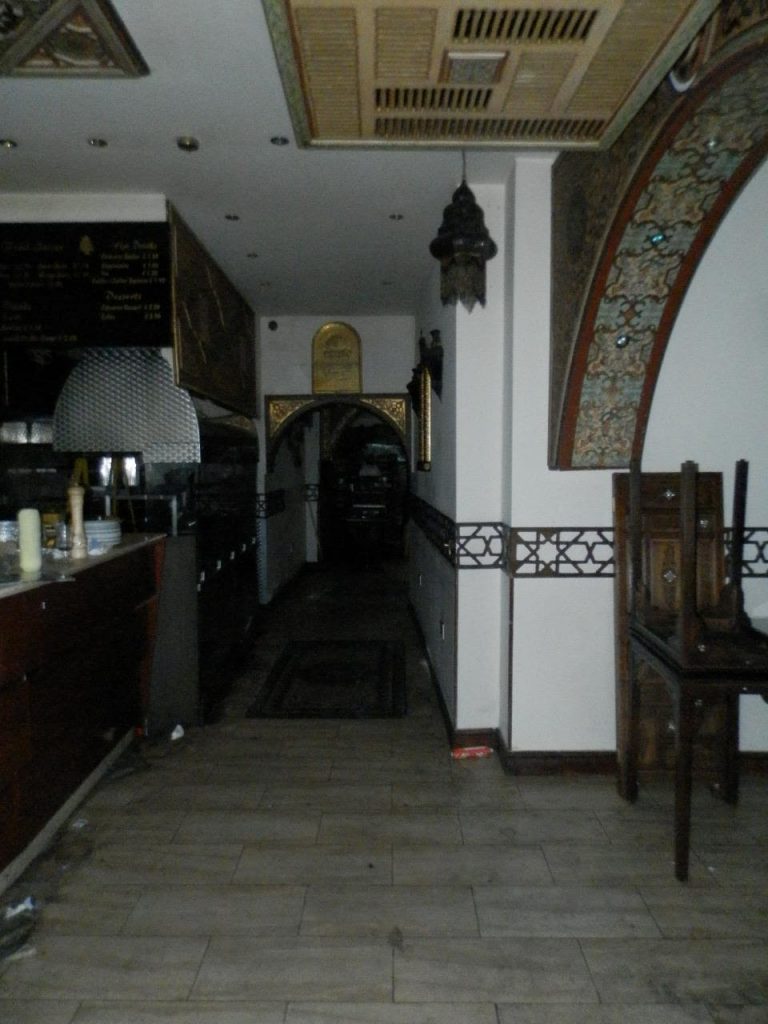
5.1 Tiled floor:
The floor is noted to be tiled throughout and appears to extend beneath the kitchen equipment. Although covered with debris, there is no evidence of damage as a result of the reported incident.
A mosaic laid into the floor is noted and too will respond to detailed cleaning.
With the cooking equipment removed and structural reinstatement taken place, the floor clean can be undertaken through the area prior to the cooking equipment and dining contents being returned.
It is proposed the structure undergoes a detailed soot clean once all elements have been removed and also in advance of all items being returned.
6.0 Contents:

6.1 Furniture:
In addition to the expected quantities of cutlery and condiments, there are a significant number of dining tables and chairs stacked in the front and rear of the restaurant.
It is recommended these are removed from the site and cleaned of residual odour and soot particulates.
Initial estimates indicate there are approx. 40 tables and 45 chairs, 12 lampshades, 3 high chairs
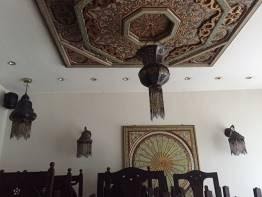
6.2 Lampshades:
Decorative lampshades are located through the property both the walls and ceiling decorations. These will also require removal and cleaning.
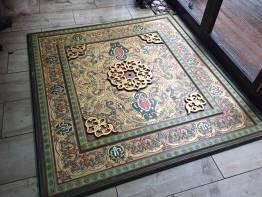
6.3 Decorative wall panels:
There are a number of panels fitted to the walls and ceiling through the restaurant and two have been advised as possibly having a gold leaf effect.
These will require removal and specialist assessment and clean.
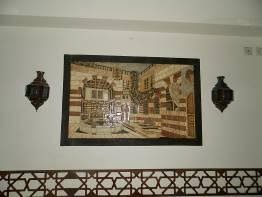
6.4 Mosaic panels:
Two panels are of stone mosaic design and will require removal and cleaning also.

6.5 Rear small bar area:
Contents in this area include a stand-alone bar, drawer unit and a foldable wooden decorative screen.
All items will require to be removed from site for cleaning.
General:
- All remaining stainless steel, sinks, tables, panelling and shelves will respond to restorative cleaning.
- The cost below for off-site secure storage is based upon a 300m3 container per week. The actual sum will be advised once all contents have been removed, assessed and salvaged.
Take the stress out of the situation! Call today and speak with an experienced professional!